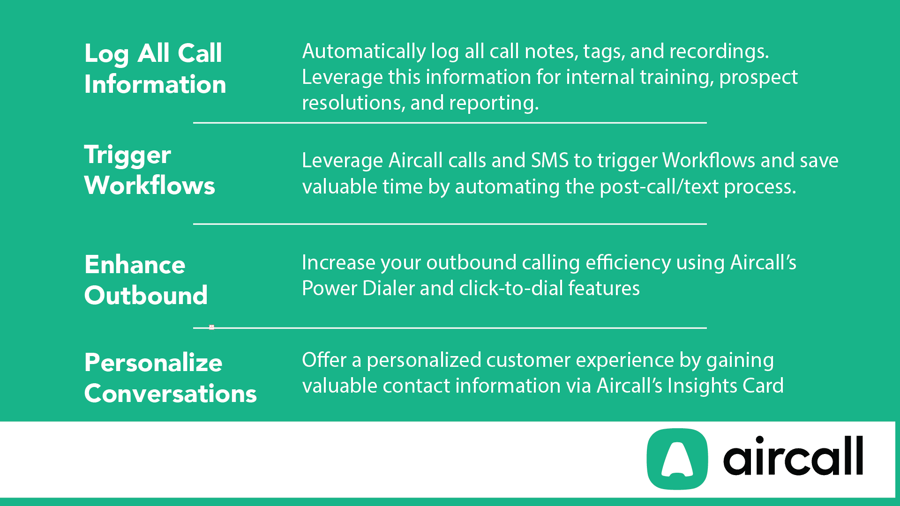E-commerce merchants face a lot of challenges that are like those any other merchant face, but some can be as unique as their value proposition and must be addressed in unique ways as well.
Automating your sales process is one of them, even though it might seem like a usual problem, e-commerce merchants must deal with some of the following obstacles regarding customers:
- Attracting qualified customers is harder within an enlarged social media universe
- Social ad prices rising all over the world
- Customer saturated with information and ads
- Competing with many other brands that could have more resources
- Having less than a 3 second window to grab someone’s attention
- Getting people’s email once they come in
After they face them, they must deal with another reality. How do they make sure no leads fall through the cracks? This is usually when a CRM or sales management platform becomes a must have instead of a nice to have.
What do ecom merchants look for in this type of platform?

- Help their sales team (of 1, 2 or even 100 people) visualize every lead
- Automate lead assignation
- Follow a customer through its lifecycle stages
- Report on success metrics
- Double as a productivity platform for their team, showing success metrics
- Integrate with other platforms that will help your sales process
TIP #1: TAKE THE TIME TO BUILD OUT YOUR SALES PROCESS IN THE PLATFORM OF YOUR CHOICE
We have seen it time and time again, not having the time to fully build the sales funnel inside the software you have can only ensure 2 things:
First, you are not taking full advantage of your investment, which is likely not small.
Second, your sales team cannot fully work integrated with your other teams and this simply means less revenue, more time spent in tasks that could be automated and less trackability of success and analytics.
Your sales process likely has at least 3 stages, making sure you create tasks for your sales team, or marketing campaigns for re-engaging users or even transactional emails to let people know when their order is placeD or shipped can go a long way:

PRE-SALE: When a lead or potential customer has just come in.
Depending on your product this stage could be longer and require more interaction, this is especially true for B2B businesses with a longer sales cycle or with personalized products that require a rep to be included in this stage.
For many e-commerce businesses (likely B2C), this is easily managed through a customer friendly interface in your store requiring no sales rep.
SALE: This is the actual purchase step.
For the B2B businesses mentioned before, this is when the bulk of interactions happen. The call from the reps, discovery meetings, quote being send out, deals being updated. A number of steps can take place here and you need to make sure you are tracking them.
A way to track them is through deal stages, moving a deal from pending to processed for instance can be the goal of each sales rep.
For other e-commerce businesses (likely B2C) this can also happen inside the store, although abandoned cart recovery campaigns can help you avoid leaving money on the table.
POST-SALE: This follow ups are key and tracking them is as important as any of the other steps.
TIP #2: AUTOMATE, AUTOMATE, AUTOMATE
Your sales management software likely has a lot of automation features, make sure they are being used.
One of the easiest things to automate is filtering out leads, assigning them to different reps to avoid the manual work of a supervisor doing that.
We have seen this can save up to 30 minutes to 1 hour every day.
Not only can you automate this, but creating tasks for your sales team to be reminded to reach out in one day, in two days or even in a week have proven to be very helpful to avoid any lead falling through the cracks.
In fact, even setting alarms for when a lead has not received an email in 48 hours can be useful, that way someone in the team can be alerted and take action before the lead goes cold.
What if you set up an automation to reach out to that disinterested lead in a month or in three? What if the automation includes the email?
In 3 months, you might get a new lead without any manpower and that is golden.
Think of your platform as a long-term investment, but for long term gains sometimes giving it time today is necessary.
.jpg?width=6048&name=stacking-wooden-blocks-is-risk-creating-business-growth-ideas%20(1).jpg)
TIP #3: INVEST IS SALES OPTIMIZING INTEGRATIONS THAT FIT YOUR PROCESS
When you get a sales management, platform is easy to feel like it should do everything already and we get it, they are not particularly inexpensive. But keep in mind your sales team is the engine of your brand, investing there can only mean growth if you make the right moves.
Do they spend too much time writing emails?
Maybe an onboarding to help them learn how to automate that is in order.
Does your sales team spend a lot of time in sales calls? This is one of the most common practice in B2B companies and it is necessary in long sales processes.
Perhaps software that helps them track calls, keep notes in one place, even get an answering machine message would be very helpful. A software somewhat like AirCall.
A smart phone for your business might be what we call it.
A deeper look at AIRCALL
This cloud based phone systems is designed to help sales team do more while on call.
Forrester just released a Total Economic Impact (TEI) report showing that Aircall customers can see an ROI of 373%!
Here are some key benefits we have seen merchants take advantage of.

1. Having customer insights at hand from the very first ring
Your sales team will be able to see customer information regarding, not only the default properties like NAME, LAST NAME, COMPANY.
They will also be able to see behavioral analytics like when they called last, who they spoke to, what they spoke about and any notes the last sales rep they talked to included.
The real benefit: DELIGHTED CUSTOMERS
No more angry customers demanding your sales rep to know when they called last and what was it about.
No more wondering who they spoke to before.
Your sales team will be more prepared than every to provide outstanding customer service.
2. Automatic call logging/forwarding
Did you know customers are less likely to call back if when they called first, they reached the wrong department?
What about that customer that wanted to reach Jhon but reached Mayra instead, should Mayra forward the call or risk it, giving the client Jhon's number and expecting they will call back. Maybe Mayra should handle the client herself.
Take the guesswork our and define your strategy. If John is around, forwarding will be easy for Mayra with AirCall, no nuance for the client.
If he isn't, Mayra can help the client by looking at all the notes Jhon had to understand their situation.
And if you miss a call, the log will be there allowing to call back at anytime.
3. Reporting in place
Calling is a sales tool and making sure it is tracked and monitored is key for success. Reporting is a big part of what AirCall will give you.
Find interesting call metrics, review engaged clients, analyze rep success and so much more.
Your sales team is the gas of your engine, the actual engine itself. Making sure you are giving them tools to get the job done is important. Remember that helping them be better in their jobs, has direct impact in your business both in your ROI and in their motivation.
Fill out this form to get more information about how AIRCALL can help you sales efforts:

